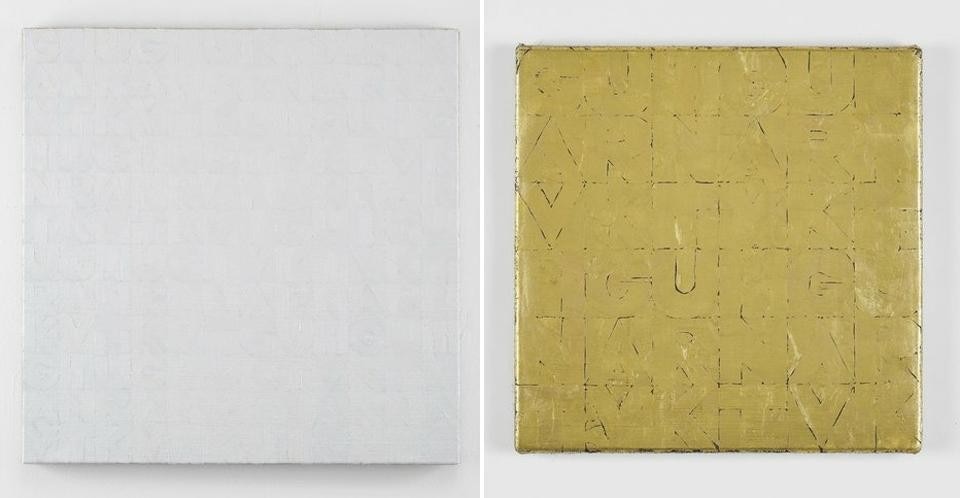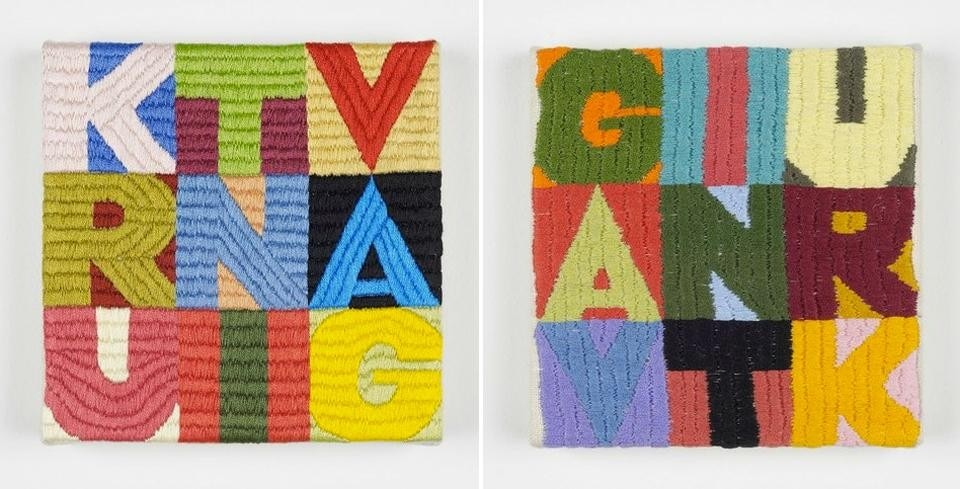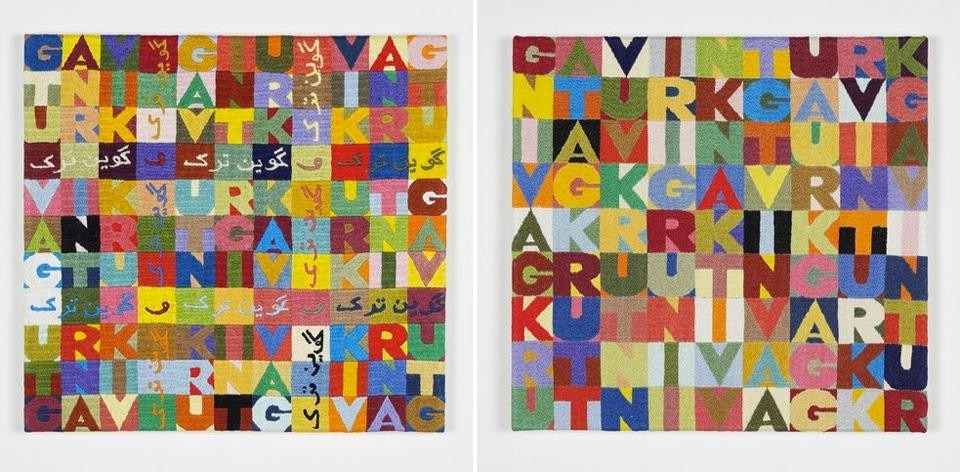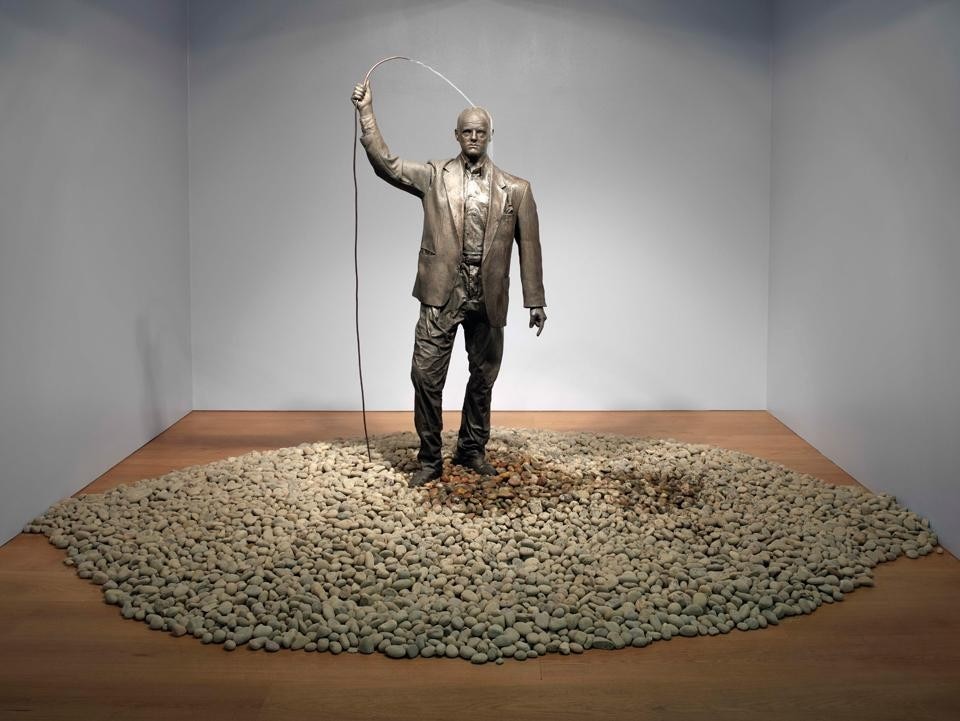Gavin & Turk is a solo show entirely consisting of new works. Yet as its name suggests, this is still an exhibition about more than one man. It is billed as an homage to Alighiero Boetti, the Italian conceptual artist, who in the 1970s, started signing his work Alighiero e Boetti, a gesture that expressed his fascination in both wordplay and the messy duality of the self. It is timed to coincide with a major Tate Modern retrospective of Boetti, who was originally associated with the Arte Povera movement in the late 1960s.
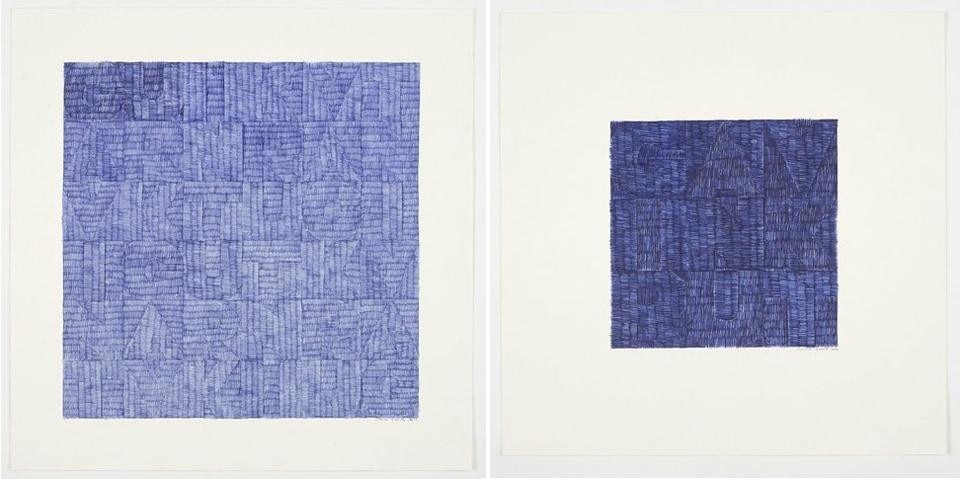
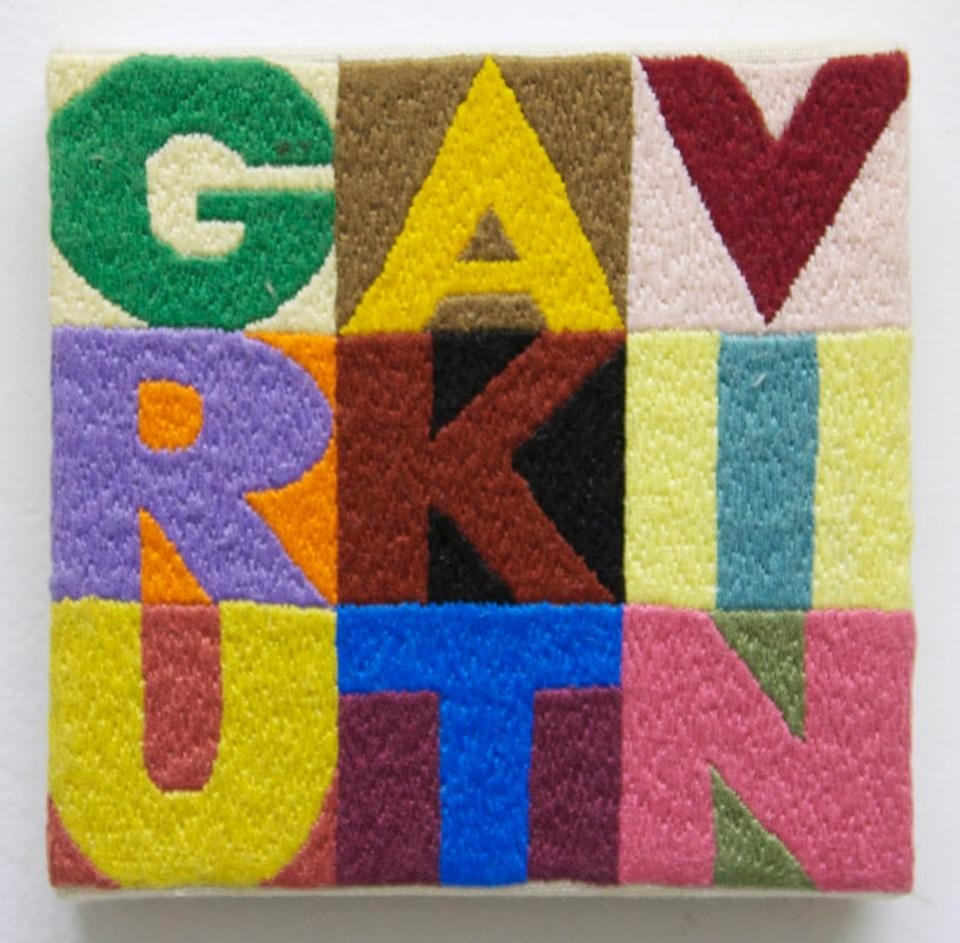
Here the debt to Boetti is most explicit in a series of multicoloured tapestries that combine the Italian artist's interest in craft, collaboration and language with striking results
